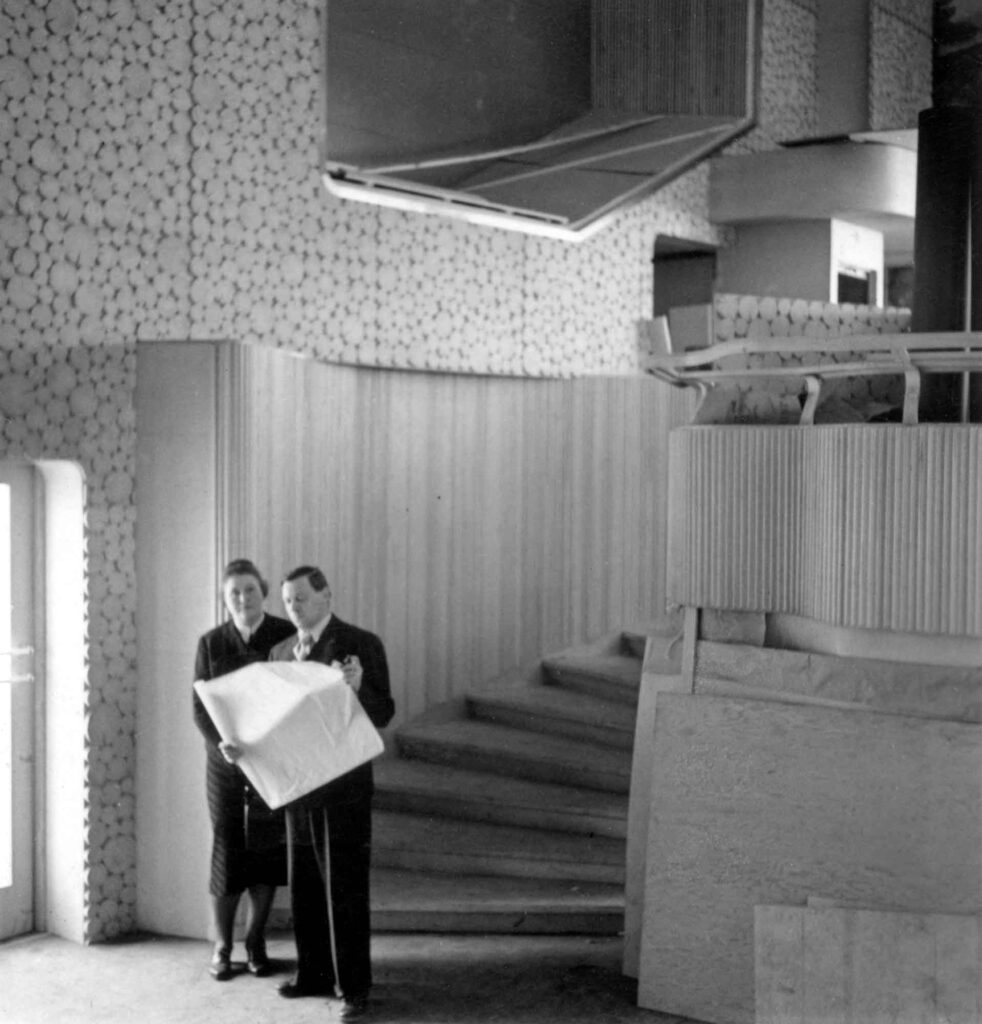Can a building spark joy? Paimio Sanatorium – originally designed by young Finnish architects Aino and Alvar Aalto in 1929-1933 – offers an inspiring journey into a functionalist landmark of wellbeing well ahead of its time.
For the cultural day-tripper, the repurposed Paimio Sanatorium takes visitors on an immersive and moving experience into the world of wellness design.
Nestled in a grove of pine trees in peaceful southwestern Finland, the striking white building with orange and green awnings stands tall.
As people step inside into the main foyer, their faces light up when they take in the airy space with its gentle rounded forms (signature Aalto) and bright, cheerful colours of turquoise blue and lemon yellow.
That joyful intersection of light, colour, and nature is what Aino and Alvar Aalto strived to create.
The healing power of design
The young architects (who were barely in their 30s) came up with the winning design for an architectural commission in 1929 for a space where tuberculosis patients could recover during the tuberculosis outbreak in Finland at the time. Back then, there was no cure for the infectious disease that mainly affects the lungs. Rest, care, community, and fresh air were part of the prescription for recuperation.
Ninety years later, walking through Paimio, which was completed in 1933, is a restorative experience for all the senses, a welcome respite from the modern, 24-7 digital world. Along the way, the informative permanent exhibition of photos and artefacts takes viewers into the architectural landmark’s fascinating history.
Here, the yellow stripes on the main floor are like liquid sunshine, even in the depths winter, guiding visitors to the main staircase with its yellow steps.
Climbing up the six flights of stairs seems effortless, which is down to design: the gentle incline between one step and the next is intentionally small, originally for the purpose of encouraging patients to choose the stairs over taking a lift as part of their recovery and rehabilitation.
Today, the stairs work just as well, as visitors easily walk up the six flights, stopping to admire the views through the large windows framing nature on the way.
Throughout Paimio, every single detail was carefully thought-out in typical Aalto style, right down to the furniture and fixtures.
Everyday innovation
Lamps were custom-designed to collect less dust and be easy to clean, thus helping to maintain high standards of hygiene.
Rounded clothing cupboards in patient rooms ensured easy cleaning and less dust and dirt for tired lungs. Innovative noiseless and splashless sinks ensured cleaniless and courtesy in two-patient rooms so that one patient wasn’t disturbed while the other washed their hands, for example. Specially designed handles for toilet door locks ensured the sleeve of a doctor’s lab coat didn’t accidentally catch on the levers.
The sleek Paimio Chair, a collector’s item today, was also brilliantly ahead of its time. Originally designed for the patients’ lounge, the armchair is angled to help sitters breathe more easily owing to its sloping back. The chair’s design is just as effective for the modern digital worker who spends too many hours hunched over a laptop or computer and can benefit from a sitting position that opens up the upper chest and facilitates breathing deeply.
At its height, the Sanatorium had capacity for 286 patients and 70 staff, which included those who worked as healthcare professionals and other staff such as those who tended to the farm that provided food for everyone.
Shared spaces such as the large canteen where healthy nourishing food was served several times a day doubled as a communal space for watching films. The onsite restaurant is still called Toivo, which means “hope” in Finnish.
The Aaltos’s vision saw a building that would radiate a connection to nature as part of the recovery process for every patient in keeping with Nordic values of equality and accessibility for everyone. This was a public hospital, not a private one.
Atop the building’s B wing is the iconic roof terrace, where patients spent several hours a day resting on lounge chairs with warm blankets. It was believed that fresh, clean air in a natural setting would help to strengthen the airways of tuberculosis patients.
Today, looking over the forests of pine trees, Paimio seems the perfect antidote to the challenges of daily life where green therapy, the idea of using nature as a source of healing and wellbeing, is one of the biggest global wellness trends.
As Alvar Aalto famously said, “form must have a content, and that content must be linked with nature.”












